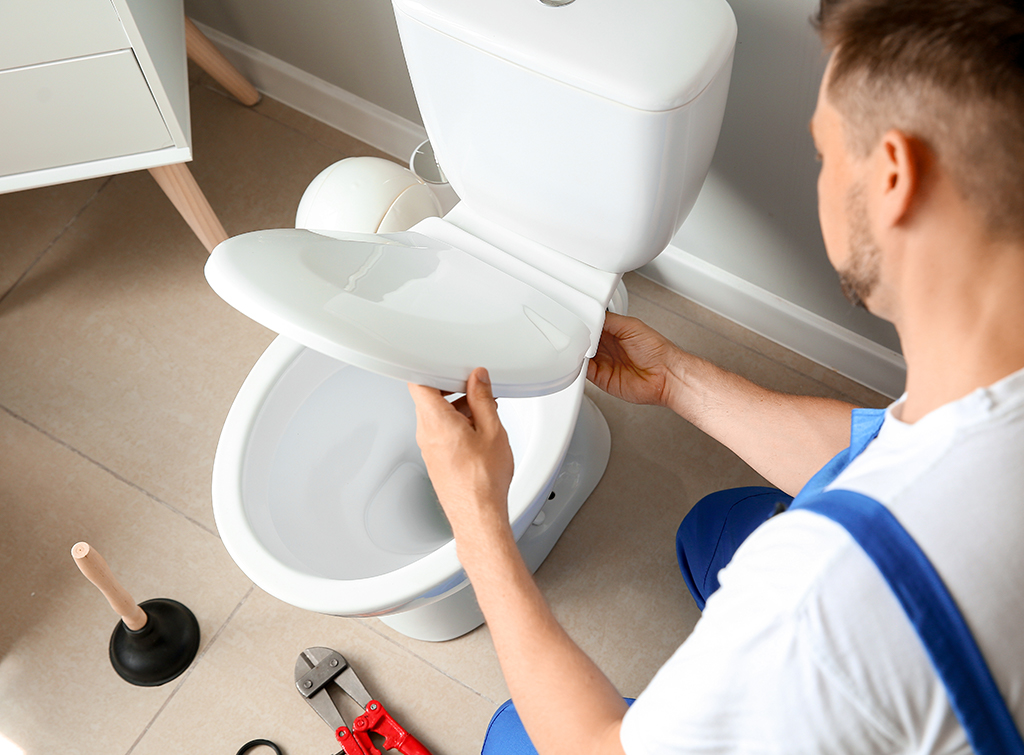We've come across this article relating to Plumbing Tips for New Homeowners down the page on the internet and accepted it made good sense to write about it with you on this page.

For new home owners, understanding and preserving washroom plumbing can conserve both time and money by protecting against expensive problems down the line. Here are some vital bathroom pipes ideas to aid you keep every little thing running smoothly.
Acquaint Yourself with the Main Shut-Off Shutoff
Knowing where the major water shut-off shutoff is located in your house is important. This enables you to rapidly switch off the water system in case of significant leakages or during pipes emergencies, preventing considerable water damage.
Consistently Examine for Leakages
Little leakages can result in big issues. Frequently inspect under sinks, around bathrooms, and near plumbing fixtures for any kind of signs of leakages. Search for dampness, small drips, or rust. Catching and fixing leaks early can avoid extra severe damages and save water.
Don't Overlook Slow Drains Pipes
If your sink or tub is draining gradually, it's typically a sign of a clog forming. Resolving this early can avoid a complete blockage. Make use of a plunger or a plumbing technician's snake to clean out debris. Avoid making use of chemical drain cleansers as they can harm your pipes over time.
Know What Not to Flush
Toilets are not waste disposal unit. Avoid purging anything aside from toilet tissue and human waste. Things like wipes, feminine hygiene items, and cotton bud ought to be gotten rid of in the trash to stop obstructions and drain backups.
Set Up Strainers in Drains
Area strainers in your sink and bath tub drains pipes to catch hair and various other debris prior to they enter your plumbing system. Cleansing the filters frequently will assist protect against buildup and maintain water moving easily.
Preserve Your Water Heater
Ensure your water heater is set to an appropriate temperature (commonly about 120 degrees Fahrenheit) to stop hot and minimize power use. Flush the tank annually to remove debris accumulation, which can lower the efficiency and lifespan of your heating unit.
Update Your Fixtures
If your home has older fixtures, consider upgrading to more effective designs. Modern commodes, showerheads, and taps are made to utilize much less water while giving excellent pressure, which can considerably lower your water bill and environmental footprint.
Be Cautious with DIY Plumbing Fixes
While it's alluring to deal with all home fixings by yourself, beware with plumbing. Some problems could require professional experience, especially if they involve major water lines or drain repair services. Working with a specialist can sometimes be extra economical than do it yourself, specifically if it stops more damage.
Get Ready For Winter
Safeguard your pipelines from cold during cold weather by shielding pipes in unheated locations like cellars, attics, and garages. Throughout extreme chilly, allow cold water drip from taps served by revealed pipes to assist protect against freezing.
Arrange Routine Upkeep
Take into consideration scheduling yearly inspections with a licensed plumbing professional. They can detect concerns that you may miss out on, such as covert leaks or damage on pipes and fixtures. Routine upkeep aids extend the life of your plumbing system and can stop emergencies.
Verdict
Comprehending and maintaining your home's shower room pipes can avoid numerous usual problems. By complying with these essential pointers, you can ensure your restroom stays useful and effective, conserving you time and money over time.
5 Plumbing Tips for First-Time Homeowners
Know How to Shut Off the Water
In most homes, the water can be shut off at two places: at the appliance or fixture itself, and for the whole house. For instance, look under your sink or behind the toilet. See those little knobs that connect with the pipes? Those are the shut off valves for those fixtures. Simply turn them until the water is off. The main shut off valve (which controls water throughout your entire home) will be outside, where the water feeds into the structure. You might need a dedicated tool, such as a water shut-off key, to shut off the water at the main.
Build an Emergency Plumbing Kit
Everyone knows how important it is to have a high-quality plunger around the house. But there are other things that can help you out when issues arise with the pipes. Building an emergency plumbing kit to solve issues on your own is part of any list of basic plumbing tips. Consider adding these things to create a basic plumbing kit:
Adjustable wrench Tongue-and-groove pliers Screwdrivers Plumber’s tape Pipe sealant Duct tape Set of hex keys Clip light for working under cabinets Auger and hand snake Do a Little Research
Many small leaks can be handled by replacing a small part of the piping system, tightening part of a faucet, or even changing out an aerator. Take the time to browse how-to articles for common plumbing problems, such as a running toilet or slow-draining sink. You might be surprised to find how easy it can be to do simple things yourself, like replace a valve in the back of the toilet.
Keep it Simple With No Chemicals
If you have a clog, you might be tempted by the promises of liquid drain cleaner. While this might work at first, it actually causes more damage deep in the pipes, eventually creating even more problems down the road.
Instead, try using baking soda and vinegar to create a strong fizzing effect that can help break up clogs and clear gunk from drains. Follow it with boiling water to clean the pipes even more thoroughly.
Take Care of Your Garbage Disposal
Be cautious about what you put down the disposal. Avoid pouring in fats, oils, and grease, as these are a surefire way to get a clog. Beware of certain foods too, such as celery or bones, as they can lodge in the works. Always run the disposal with water flowing.
https://modernize.com/homeowner-resources/other/10-plumbing-tips-for-first-time-homeowners

Set Up An Appointment